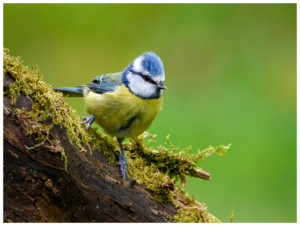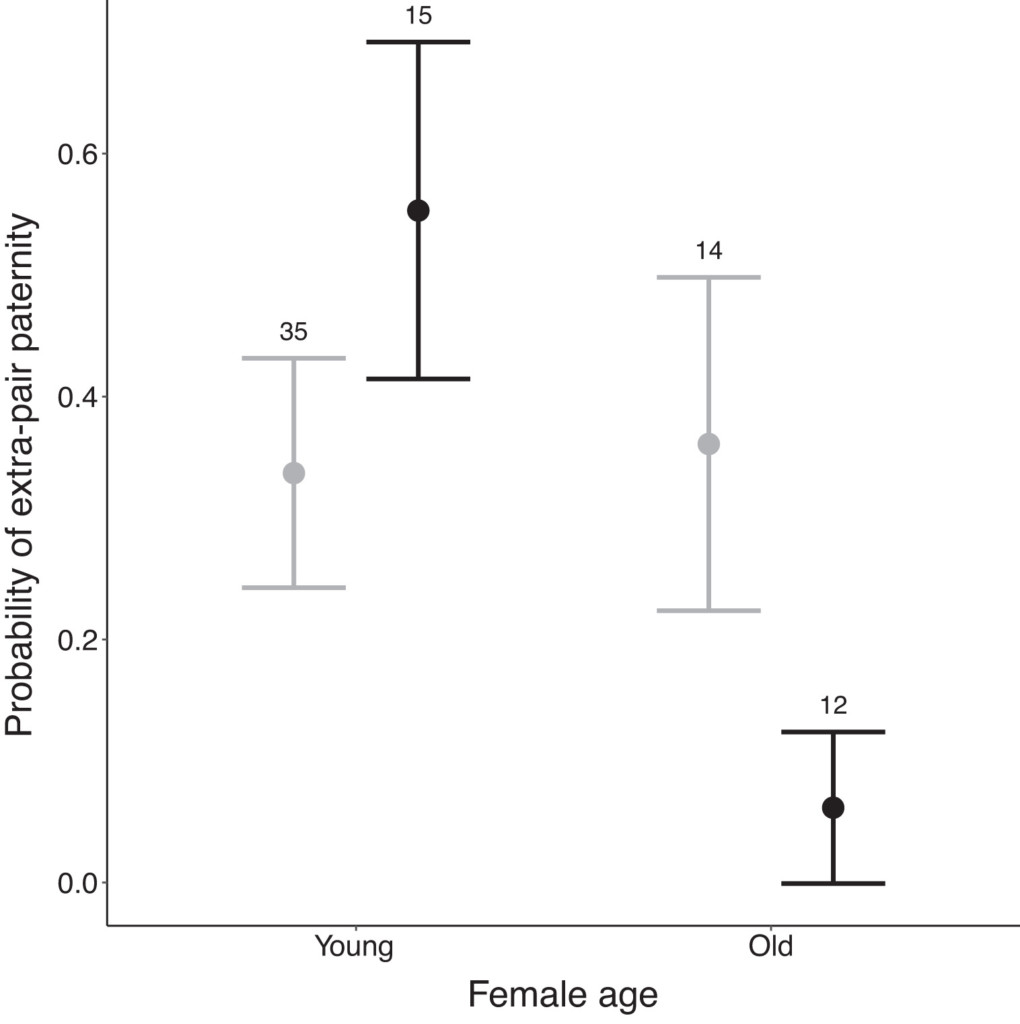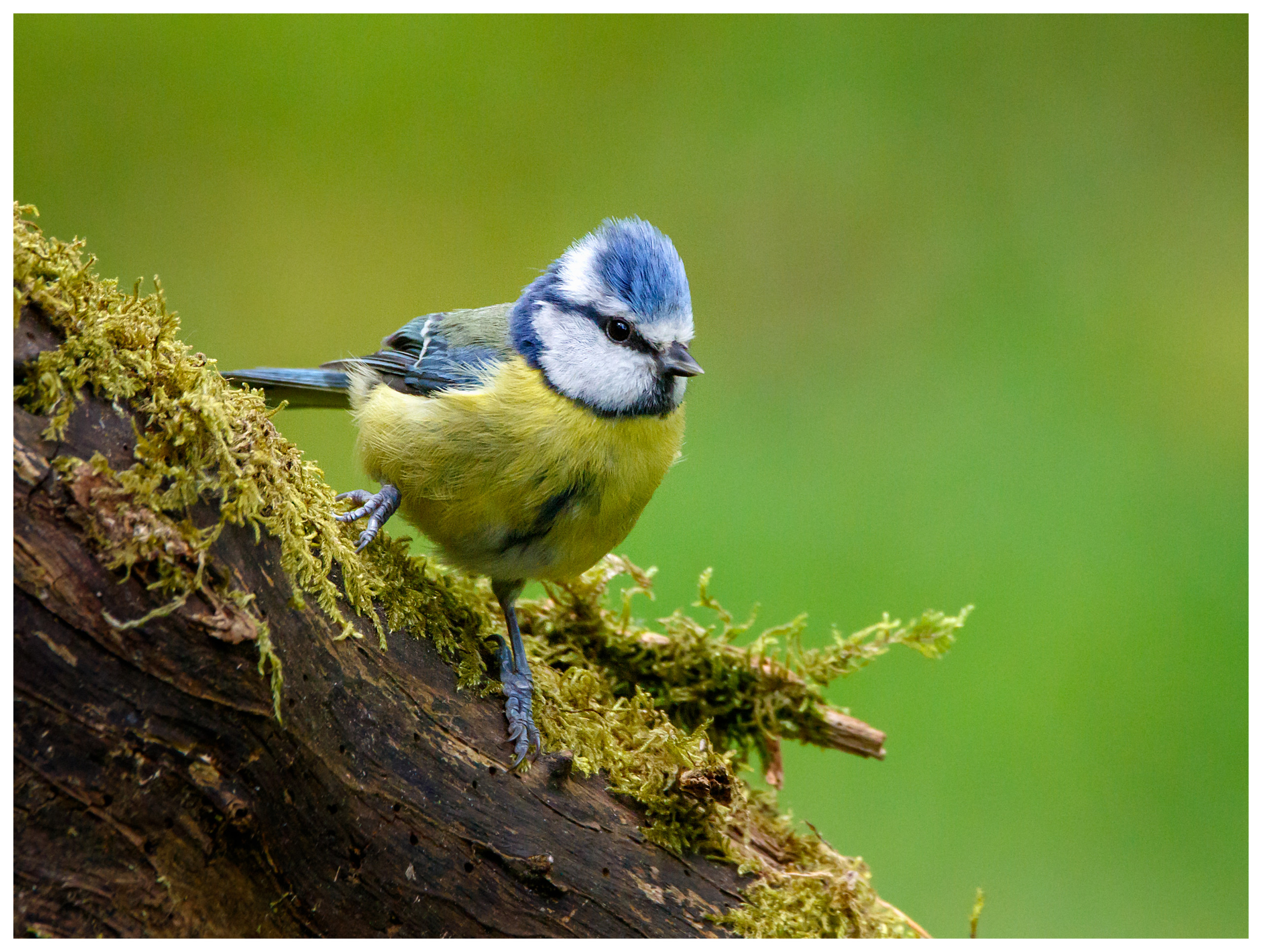
LINKED PAPER
Extra‐pair paternity in Blue Tits (Cyanistes caeruleus) depends on the combination of social partners’ age. Arct, A., Drobniak, S. M., Mellinger, S., Martyka, R., Gustafsson, L., & Cichoń, M. 2022. IBIS. DOI: 10.1111/ibi.13022. VIEW
Ornithologists used to consider songbirds as the textbook example of monogamy. Male and female seemed to build nests and take care of their offspring in perfect harmony. This idyllic picture was shattered by genetic analyses which revealed that songbirds often mate with other individuals when their partner is not paying attention (Griffith et al. 2002). These so-called extra-pair copulations regularly result in offspring that are not related to the social partner. On the Swedish Island of Gotland, for example, no less than 40 percent of Blue Tit (Cyanistes caeruleus) nest boxes contain extra-pair nestlings (Arct et al. 2013). A recent survey of this population uncovered an interesting pattern: older birds are less likely to engage in extra-pair copulations.
Good genes
An international team of researchers analysed a long-term dataset of mating patterns among the Swedish Blue Tits. They found that ‘old females paired to old males had a lower level of EPP [i.e. extra-pair paternity] in comparison to young females paired to old males.’ This result can be explained by both female mating preferences and male guarding strategies. Females might prefer older males because male age reflects superior genetic quality (according to the good genes hypothesis, Akçay & Roughgarden 2007). In addition, older males are probably more experienced in preventing their partner from engaging in extra-pair copulations (Westneat & Stewart 2003). Together, these behaviours can lead to the lower levels of extra-pair copulations in older birds.

Figure 1. Older females (right part) are less likely to have extra pair copulations when they have an older partner (in black) compared to a younger one (in grey).
Avoiding inbreeding
Despite this age-effect, extra-pair copulations were still quite common among the Blue Tits on Gotland. This ubiquity of cheating birds raises the question whether these birds benefit from extra-pair copulations One possible benefit concerns inbreeding avoidance (Brouwer and Griffith 2019). If you paired up with a closely related partner, it will be worthwhile to mate with birds that are genetically dissimilar from you. However, detailed analyses of the island population indicated that the probability of extra-pair copulations was not influenced by the genetic make-up of the social partners. More research is required to understand why the Swedish Blue Tits are so unfaithful. Hence, the researchers will continue to monitor the love lives of these small songbirds.
References
Akçay, E. & Roughgarden, J. (2007). Extra-pair paternity in birds: review of the genetic benefits. Evolutionary Ecology Research 9: 855. VIEW
Arct, A., Drobniak, S.M., Podmokła, E., Gustafsson, L. & Cichoń, M. (2013). Benefits of extra-pair mating may depend on environmental conditions — an experimental study in the blue tit (Cyanistes caeruleus). Behavioral Ecology and Sociobiology 67: 1809– 1815. VIEW
Brouwer, L. & Griffith, S.C. (2019). Extra-pair paternity in birds. Molecular Ecology 28: 4864– 4882. VIEW
Griffith, S.C., Owens, I.P.F. & Thuman, K.A. (2002). Extra pair paternity in birds: a review of interspecific variation and adaptive function. Molecular Ecology 11: 2195– 2212. VIEW
Westneat, D.F. & Stewart, I.R. (2003). Extra-pair paternity in birds: causes, correlates, and conflict. Annual Review of Ecology, Evolution, and Systematics 34: 365– 396. VIEW
Image credits
Top right: Blue Tit (Cyanistes caeruleus) | Gerry Zambonini | CC BY-SA 3.0 Wikimedia Commons
Blog posts express the views of the individual author(s) and not those of the BOU.
If you want to write about your research in #theBOUblog, then please see here





